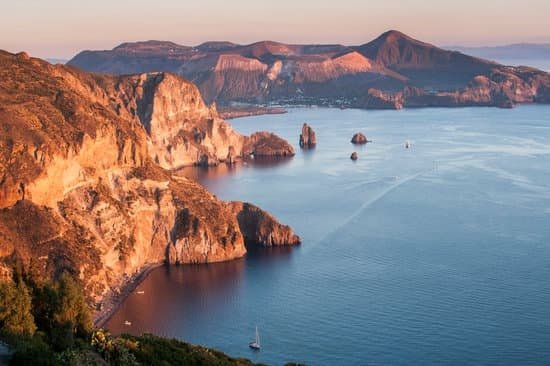When best time to travel to Italy? Planning a trip to this beautiful country is a delightful endeavor, but the timing of your visit can greatly impact your overall experience. From the bustling streets of Rome to the serene canals of Venice, Italy offers something for every traveler. Understanding the nuances of seasons, events, and local insights can help you make the most of your Italian adventure.
Italy boasts a diverse climate across its regions, with varying weather patterns throughout the year. Whether you prefer basking in the Mediterranean sun or enjoying a winter wonderland in the Alps, choosing the right time to visit can enhance your travel experience. The weather overview section will provide valuable information on what to expect during different seasons in Italy and how it can influence your itinerary.
In this article, we will delve into high season versus low season travel, discussing the pros and cons of each. While peak tourist seasons offer vibrant energy and bustling cities, off-peak times allow for more intimate experiences and quieter exploration. By weighing these factors along with budget considerations, events and festivals schedules, crowd levels at tourist attractions, and local insights, you can tailor your trip to Italy for a truly unforgettable adventure.
Weather Overview
Italy boasts a diverse climate that varies significantly from the cool, alpine regions in the north to the sunny Mediterranean coast in the south. The best time to travel to Italy depends largely on what type of weather you prefer and the activities you plan on doing during your trip.
In general, the summer months of June, July, and August are peak tourist season in Italy, with hot temperatures and crowded attractions. This is ideal for beachgoers and sun-seekers looking to soak up Italy’s Mediterranean charm. However, if you prefer milder weather and fewer crowds, consider visiting during the shoulder seasons of spring (April – May) or fall (September – October). During these times, you can still enjoy pleasant weather while avoiding the peak tourist masses.
Winter in Italy, especially in the northern regions such as Milan and Venice, can be cold and damp. However, this time of year offers a unique charm with Christmas markets and fewer tourists crowding popular sites. Ski enthusiasts will also appreciate the winter months for hitting the slopes in some of Italy’s top ski resorts. To truly experience all that Italy has to offer, it’s essential to consider both weather preferences and personal interests when planning your trip.
| Best Time to Visit | Weather |
|---|---|
| Spring (April – May) | Pleasant temperatures, blooming flowers |
| Summer (June – August) | Hot temperatures, peak tourist season |
| Fall (September – October) | Mild weather, harvest festivals |
High Season vs Low Season
Italy is a country that attracts tourists all year round, but determining the best time to visit can significantly impact your travel experience. When considering the high season versus low season in Italy, there are distinct advantages and disadvantages depending on your preferences.
During the high season, which typically falls between June and August, Italy experiences warm weather and long sunny days, making it ideal for exploring its picturesque cities and coastal regions. However, this period also brings large crowds of tourists to popular destinations like Rome, Florence, and Venice. Attractions can be crowded, accommodation prices soar, and you may find yourself waiting in long lines to enter key landmarks.
On the other hand, traveling during the low season in Italy from November to March offers a different charm. While the weather may be cooler and some beach destinations close down for winter, you can enjoy a more authentic experience with fewer tourists around. You’ll have the opportunity to interact more with locals, explore hidden gems without the crowds, and take advantage of discounted rates on accommodations and tours.
| High Season | Low Season |
|---|---|
| Crowded attractions | Fewer tourists |
| Higher prices | Discounted rates |
| Sunny weather | Cooler temperatures |
Ultimately, whether you choose to visit Italy during the high or low season depends on your travel preferences – whether you prefer iconic sights at their busiest or seek a more laid-back experience off the beaten path. Consider your priorities when planning your trip to make sure you get the most out of your Italian adventure.
Events and Festivals
Italy is known for its vibrant culture and lively festivals that take place throughout the year. Understanding the schedule of these events can greatly enhance your travel experience in Italy. From religious celebrations to food festivals, there is something for everyone to enjoy in this beautiful country.
Carnevale in Venice
One of the most famous events in Italy, Carnevale in Venice is a spectacle of masked balls, parades, and festivities that dates back centuries. Taking place before Lent, usually in February or early March, this event attracts visitors from all over the world. The city comes alive with colorful costumes and elaborate masks, creating a magical atmosphere that is not to be missed.
Palio Di Siena
For those interested in witnessing a traditional Italian event, the Palio di Siena in Tuscany is a must-see. Held twice a year on July 2nd and August 16th, this historic horse race takes place in the picturesque Piazza del Campo. The city of Siena buzzes with excitement as contrade (neighborhoods) compete for victory, making it an exhilarating experience for spectators.
Christmas Markets
If you’re planning a visit to Italy during the holiday season, be sure to explore the charming Christmas markets that pop up in cities like Rome, Florence, and Milan. These festive markets offer a variety of traditional crafts, delicious seasonal treats, and unique gifts. Strolling through twinkling lights and sipping on mulled wine is a delightful way to immerse yourself in Italian holiday traditions.
Budget Considerations
When planning a trip to Italy, one of the crucial factors to consider is the budget. The cost of traveling can vary depending on the time of year you choose to visit this beautiful country. Understanding how the seasons affect prices can help you make an informed decision and possibly save some money along the way.
Here are some key points to consider when it comes to budget considerations for traveling to Italy:
- High Season: If you decide to visit Italy during peak tourist season, which typically falls in the summer months from June to August, you can expect higher prices for accommodations, transportation, and attractions. This is when most tourists flock to popular destinations like Rome, Florence, and Venice, driving up demand and costs.
- Shoulder Season: Traveling during the shoulder seasons in spring (April-May) or fall (September-October) can offer a good balance between favorable weather and lower prices. During these months, you may find more affordable hotel rates, discounted airfare, and fewer crowds at popular tourist spots.
- Low Season: The winter months from November to February constitute the low season in Italy. While some regions may experience cold weather and reduced daylight hours during this time, it can also be an excellent opportunity to snag great deals on accommodations and enjoy a quieter atmosphere at famous landmarks.
By carefully considering your travel dates based on your budget preferences, you can make the most of your trip to Italy without breaking the bank. Whether you prioritize saving money or avoiding crowds, choosing the right time of year can significantly impact your overall travel expenses.
Crowds and Tourist Attractions
When it comes to visiting Italy, one of the key factors to consider is how crowds can impact your experience at famous tourist attractions. The time of year you choose to travel can greatly affect the number of people you will encounter at popular sites such as the Colosseum in Rome, the Uffizi Gallery in Florence, or the canals of Venice.
Avoiding large crowds not only allows for a more enjoyable and peaceful visit but also gives you the opportunity to truly appreciate the beauty and history of these iconic landmarks.
Peak Tourist Seasons
During peak tourist seasons in Italy, typically from June to August, major attractions tend to be overrun with visitors from all around the world. Long lines, crowded spaces, and difficulty finding accommodation are common issues faced by travelers during this time. It’s essential to plan your visit wisely and book tickets in advance if you choose to travel during these months.
Off-Peak Times
On the other hand, traveling during off-peak times, such as late fall or early spring, can significantly reduce the crowds at tourist attractions. The weather may not be as warm compared to summer months, but you’ll have a more intimate experience exploring historical sites without feeling rushed or overwhelmed by large tour groups. Consider visiting Italy in April or October when the weather is mild, and the number of tourists is relatively low.
Special Events and Festivals
Another aspect to consider when planning your trip to Italy is avoiding popular events and festivals that attract even larger crowds than usual. For example, Venice Carnival in February or Milan Fashion Week in September draw massive numbers of people to these cities. Researching event calendars and local celebrations can help you avoid peak times when attractions are especially crowded so you can enjoy a more peaceful visit.
Local Insights
Italy is a country that truly comes alive when experienced like a local. From the traditional festivals to the lesser-known gems, there are certain times of the year when visiting Italy can provide a more authentic and immersive experience. Here are some insider tips from locals on the best time to experience Italy like a true Italian:
- Spring (March to May): Italians cherish the arrival of spring, celebrating with festivals and events across the country. The weather is pleasant, with blooming flowers and mild temperatures ideal for exploring cities and countryside alike. This season offers a glimpse into local life without the summer crowds.
- Summer (June to August): While summer is peak tourist season in Italy, it also brings vibrant energy and endless activities. Locals recommend heading to coastal towns or lakeside retreats to escape the heat and enjoy a more relaxed pace of life. Dive into outdoor markets, dine al fresco at family-run trattorias, and embrace the lively beach culture.
- Fall (September to November): As the summer crowds dissipate, fall emerges as a favorite season among locals for its harvest festivals and gastronomic delights. This is the best time to savor regional delicacies like truffles, mushrooms, and wine during food festivals that showcase Italy’s rich culinary heritage. Take advantage of cultural events such as opera performances and art exhibitions in less crowded settings.
Local insights also emphasize that winter (December to February) can offer a unique perspective on Italy, especially in smaller towns where Christmas markets and seasonal traditions take center stage. While some attractions may have limited hours or closures during this time, travelers can experience a quieter side of Italy with cozy cafes, festive decorations, and an intimate atmosphere perfect for connecting with locals.
Ultimately, understanding when best time to travel to Italy from a local perspective allows visitors to appreciate the country’s diverse culture and traditions beyond just its tourist attractions.
Personal Experiences
Choosing the best time to travel to Italy can significantly impact your overall experience in this beautiful country filled with history, culture, and stunning landscapes. While Italy is a year-round destination, each season offers unique opportunities and challenges for travelers. Understanding the weather patterns, peak tourist seasons, local events, and budget considerations can help you plan a memorable trip to Italy.
Many travelers find that the best time to visit Italy is during the shoulder seasons of spring (April-May) and fall (September-October). During these months, you can enjoy pleasant weather, fewer crowds, and lower prices on accommodations and attractions. The mild temperatures make it ideal for exploring cities like Rome, Florence, and Venice without feeling overwhelmed by tourists. Additionally, spring blooms and autumn foliage add an extra layer of beauty to Italy’s already enchanting scenery.
However, personal experiences vary when it comes to choosing the best time to visit Italy. Some travelers have found that braving the summer crowds is worth it for the vibrant atmosphere of festivals like Siena’s Palio or Venice’s Carnevale. Others prefer the tranquility of winter in Italy when Christmas markets light up historic squares and ski resorts come alive in the Alps.
Ultimately, the best time to travel to Italy depends on your preferences, interests, and willingness to navigate different seasonal offerings. Whether you choose peak season or off-peak season, Italy will undoubtedly charm you with its timeless allure.
Frequently Asked Questions
What Is the Best Month to Go to Italy?
The best month to go to Italy really depends on what you’re looking for in your experience. However, many people consider May to be one of the best months due to the pleasant weather, blooming flowers, and fewer crowds compared to peak summer months.
What Is the Cheapest Time of Year to Go to Italy?
The cheapest time of year to go to Italy is typically during the winter months, from November through February. During this low season, you can find great deals on flights and accommodations, and attractions are less crowded.
What Month Does Everything Close in Italy?
In Italy, the month when many things close down or have reduced hours is August. This is when many locals take their annual vacation, leading to some businesses, shops, and restaurants shutting their doors for a few weeks during this period.

I’m a passionate traveler, writer, and Italophile. My fascination with Italy’s history, art, and culture has led me on countless adventures across the Italian landscape. Through “I Live Italy,” I share my love for this extraordinary country and aims to inspire others to explore its boundless beauty.





